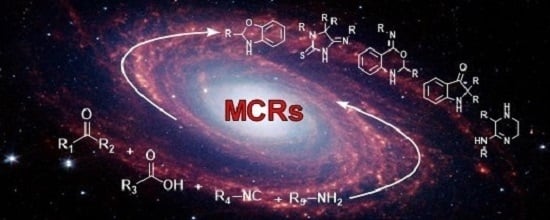Isocyanide-Based Multicomponent Reactions for the Synthesis of Heterocycles
Abstract
Share and Cite
Váradi, A.; Palmer, T.C.; Notis Dardashti, R.; Majumdar, S. Isocyanide-Based Multicomponent Reactions for the Synthesis of Heterocycles. Molecules 2016, 21, 19. https://doi.org/10.3390/molecules21010019
Váradi A, Palmer TC, Notis Dardashti R, Majumdar S. Isocyanide-Based Multicomponent Reactions for the Synthesis of Heterocycles. Molecules. 2016; 21(1):19. https://doi.org/10.3390/molecules21010019
Chicago/Turabian StyleVáradi, András, Travis C. Palmer, Rebecca Notis Dardashti, and Susruta Majumdar. 2016. "Isocyanide-Based Multicomponent Reactions for the Synthesis of Heterocycles" Molecules 21, no. 1: 19. https://doi.org/10.3390/molecules21010019
APA StyleVáradi, A., Palmer, T. C., Notis Dardashti, R., & Majumdar, S. (2016). Isocyanide-Based Multicomponent Reactions for the Synthesis of Heterocycles. Molecules, 21(1), 19. https://doi.org/10.3390/molecules21010019





